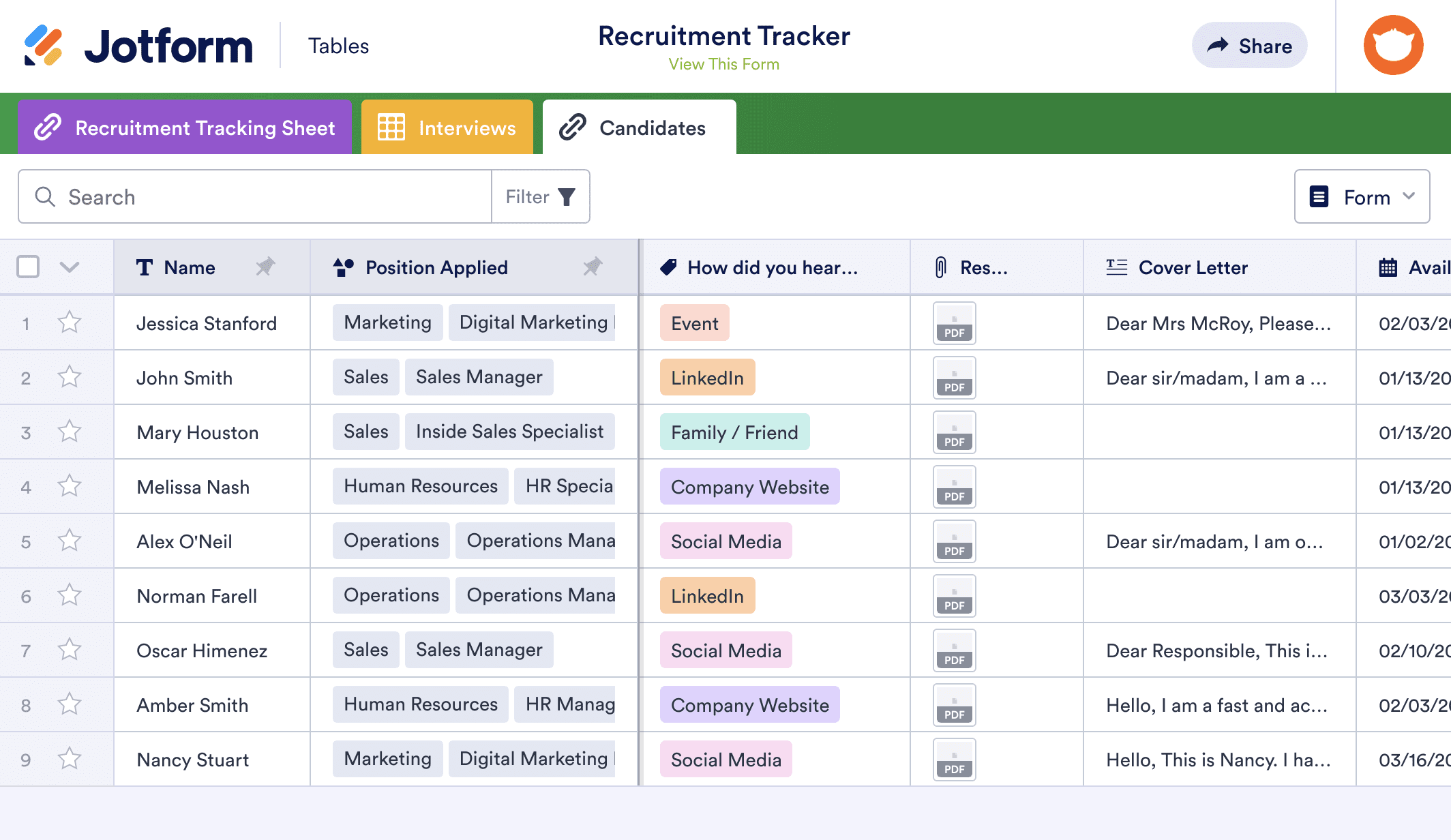Recruiting in the digital world is different from the hiring process of years past. Whether you’re bringing on a few employees or hiring at scale, it can be challenging to keep up with stacks of resumes and select qualified candidates.
Your HR team has limited hours in the day to post job openings and onboard new hires. How do you improve efficiency and optimize the effectiveness of your hiring systems? Implement recruitment automation.
Automation technology is transforming the recruitment industry, with many recruitment departments leaning on systemized solutions for finding, analyzing, and communicating with applicants.
But you also need to strike a good balance between using automation and providing a personal touch to your hiring process. Each candidate should feel comfortable and supported. Once you find that balance, you’ll be able to create a streamlined way to bring in the best employees for your workforce.
Benefits of recruitment automation
It’s worth the time and effort to implement new, automated recruitment systems. In fact, automating a variety of your recruiting department’s processes and tasks can
- Ensure procedures are consistent at every stage of recruitment
- Reduce stress and workload for HR staff members
- Improve the productivity of the team
- Attract better candidates and hires
- Optimize data collection
- Increase outreach for open positions
- Reduce reliance on manual processes
With the right software programs, your HR department can customize the best automation solutions to match your organization’s unique needs.
11 ways to use automation in recruiting
Automation can be a powerful way to help HR professionals improve their hiring process. Here are some areas where recruitment automation is most effective:
1. Job application forms. Find the right person for the open position by having interested candidates apply through an online form. Collecting job application details online eliminates stacks of paperwork. Customize the forms to collect everything from contact information to cover letters and resumes.
2. Recruitment submission form. Give applicants a way to submit their information when you connect with them through a job fair or via outreach. This submission form provides an easy way to gather resumes and cover letters from the potential candidates you meet.
3. Online interview questionnaire form. Prescreen applicants by having each person fill out a questionnaire before the interview. An interview questionnaire makes it simple to collect information about each person before interviewing them on a video call or in person.
4. Reference check authorization. Make sure you check the references of your top candidates. These conversations provide insight into a person’s performance and experience in previous positions. Use this form to get authorization from the candidate to contact their references.
5. Employee reference request. Make the reference process a little easier by providing the former employer with a reference request link, so they can provide information at their convenience. Once you get authorization from the candidate, you can use this form instead of calling or meeting with the candidate’s references.
6. Employee referral form. Give current employees an opportunity to refer and share information about potential job applicants. Employee referrals are one of the most cost-effective, efficient ways to connect with candidates.
7. Interview calendar. Organize your systems using a calendar template. This tool can help you line up your interview schedule or map out a recruitment plan to fill open positions.
8. Offer letter submission form. Once you’ve narrowed down the list of potential candidates, you can use this offer form to track new hire information to support onboarding.
9. Onboarding form. Use an onboarding form to guide job candidates through applying, training, and starting work. Implement an onboarding system to ensure that the HR department follows through with all necessary new hire activities.
10. Candidate experience survey. Improve internal systems by asking candidates for feedback about the recruiting and hiring process. This form allows each person to rate their experience and offer recommendations so your HR department can better serve applicants in the future.
11. Recruitment tracker. Create a tracking system for monitoring applications, interviews, and job offers. Jotform Tables provides an effective solution for organizing candidate information and tracking the entire recruitment process, with automatic updates when candidates fill out your forms.
Jotform provides all of the tools you need to keep track of each stage in the recruitment process. Improving the hiring process allows you to find the optimal candidates for open positions. And when you have effective systems in place for recruiting and interviewing, it positively impacts employee retention and satisfaction.
Using forms and tables for recruitment automation helps streamline the entire process, keeping all of your information consolidated in a single database. Find the right templates to match your needs or customize the forms and tables to fit your department’s specific requirements.




































Send Comment:
1 Comments:
More than a year ago
Learn the banes and boons of the automated recruitment process and equip yourself to embrace the future of HR.